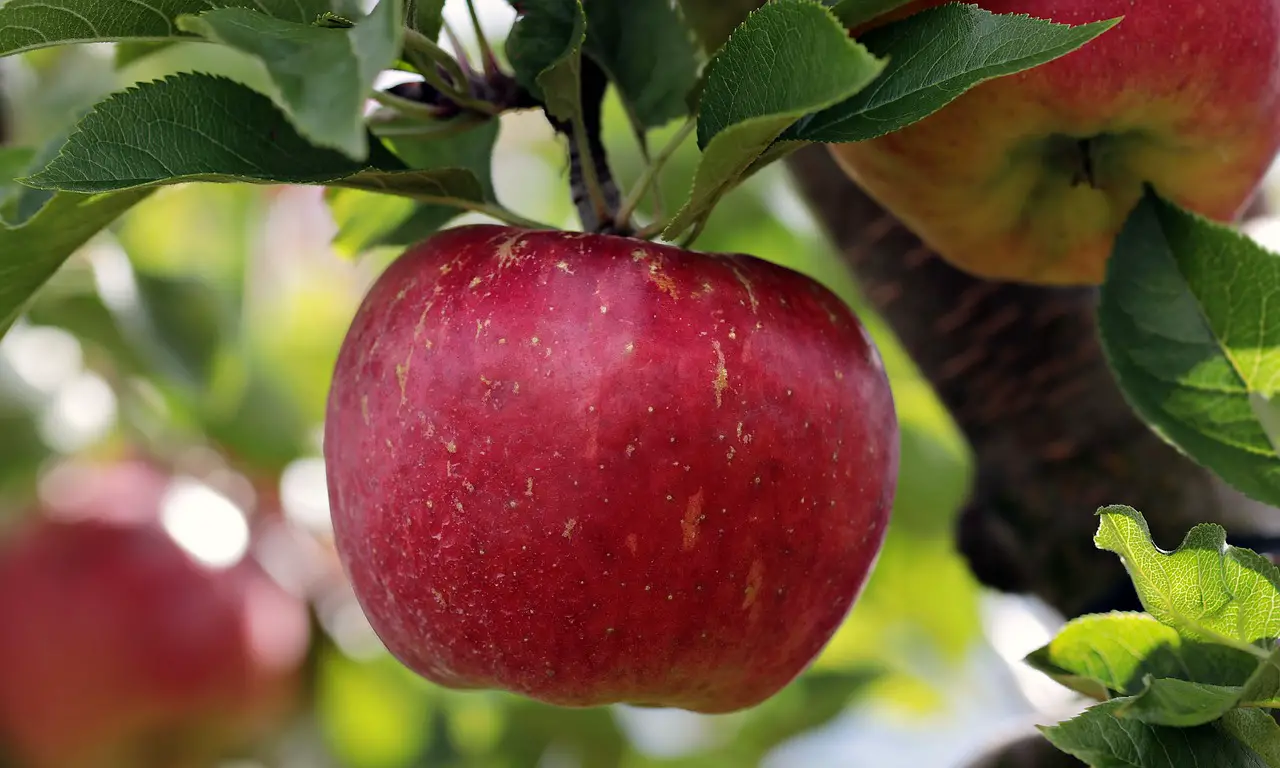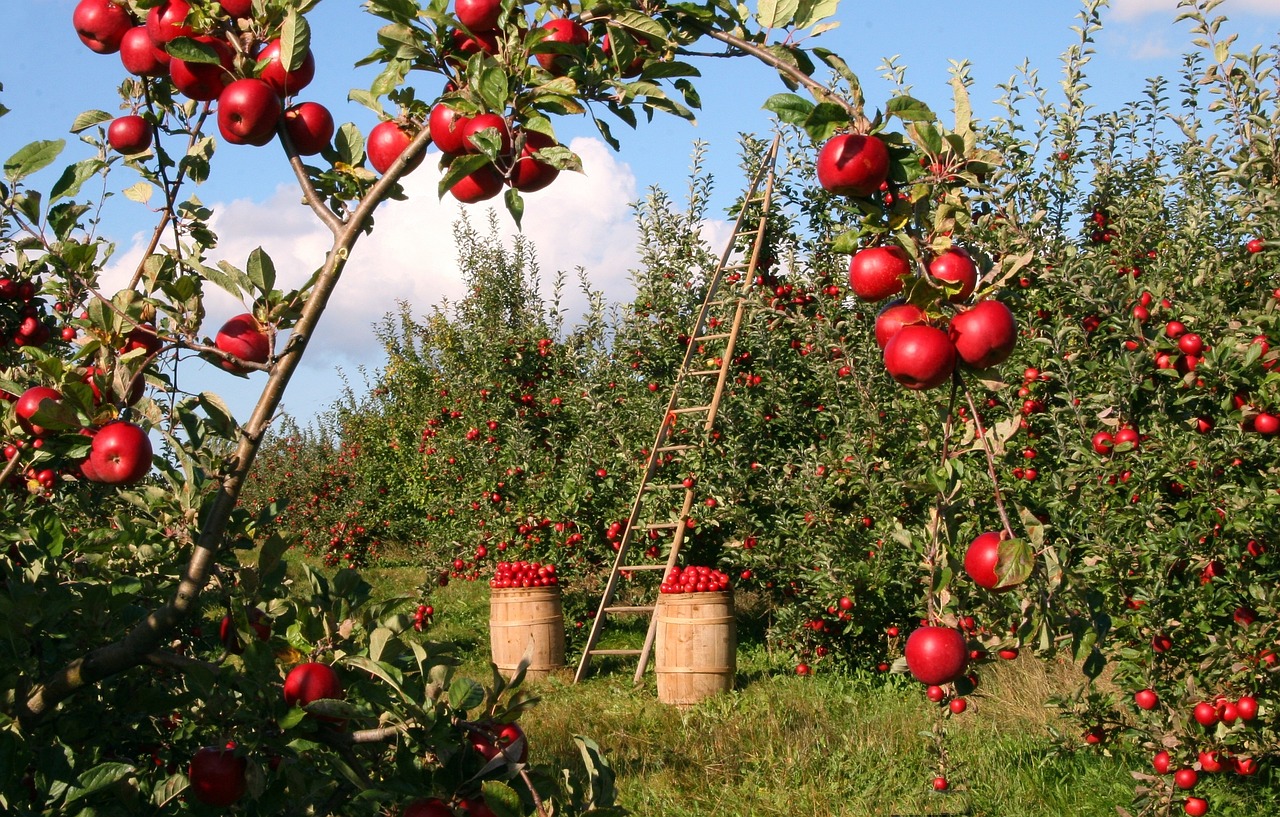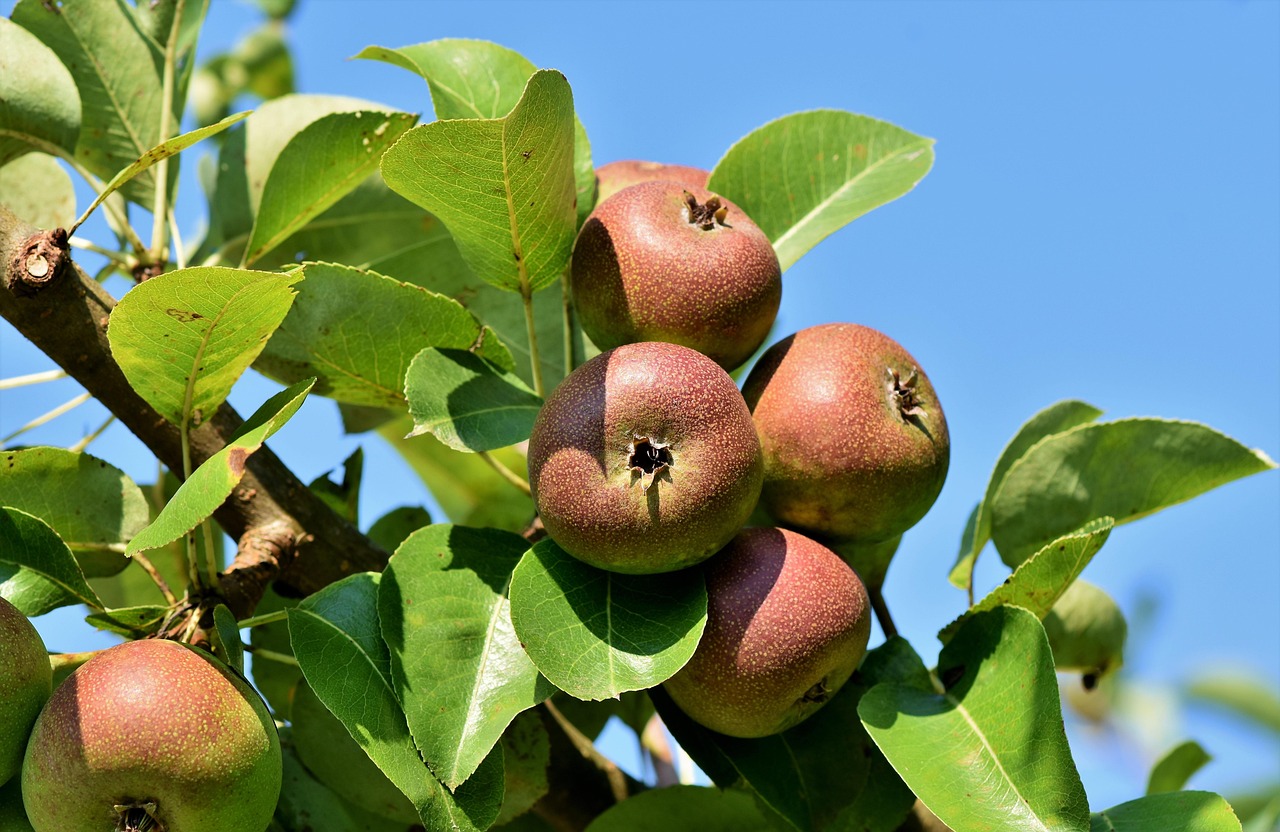Pruning apple trees effectively helps enhance their natural resistance to pests and diseases. Regular pruning promotes better air circulation and sunlight penetration, reducing moisture retention and creating an environment less favorable for pathogens.
Apple trees are a popular choice among home gardeners and commercial orchards alike. Their delicious fruit and beautiful blossoms make them a delightful addition to any landscape. However, maintaining healthy apple trees requires careful attention, particularly when it comes to pruning. Proper pruning techniques can significantly impact the health and productivity of the tree. One of the lesser-known benefits of pruning is its ability to foster natural pest and disease resistance.

Understanding the basics of apple tree growth is essential for effective pruning. Apple trees grow in a specific structure, consisting of a central leader and multiple lateral branches. This growth pattern dictates how light and air reach the tree’s interior. Without proper pruning, the center of the tree can become dense, leading to increased humidity and promoting fungal diseases.
Benefits of Pruning for Pest and Disease Resistance
Pruning apple trees offers several key benefits that contribute to their overall health. These benefits include:
- Improved Air Circulation: Well-pruned trees allow for better airflow, which helps reduce humidity levels within the tree canopy.
- Enhanced Sunlight Exposure: Sunlight is crucial for photosynthesis. Pruning opens up the tree, ensuring that leaves receive adequate light, which helps strengthen the tree.
- Reduced Disease Incidence: Thinning out crowded branches minimizes conditions favorable for diseases such as powdery mildew and apple scab.
- Increased Fruit Quality: Proper pruning encourages better fruit development by allowing the tree to channel its energy into fewer, higher-quality apples.
It is also important to consider the timing and technique of pruning. Apple trees should generally be pruned during late winter or early spring while they are still dormant. This timing minimizes stress on the tree and promotes vigorous growth as the weather warms. The following table outlines recommended pruning practices based on tree age:

| Tree Age | Pruning Technique | Focus Area |
|---|---|---|
| 1-3 years | Training cuts | Establishing a strong framework |
| 4-7 years | Thinning cuts | Encouraging air circulation and light penetration |
| 8 years and older | Maintenance cuts | Removing dead or diseased wood |
The role of pruning in maintaining a healthy apple tree cannot be overstated. By removing dead or diseased branches, gardeners can prevent the spread of potential infections throughout the tree. Additionally, targeting branches that are crossing or rubbing against each other helps reduce wounds that can invite pests and diseases.
Identifying Pests and Diseases
To effectively prune for pest and disease resistance, it is crucial to recognize common pests and diseases that affect apple trees. Some frequent pests include:
- Codling Moth: This insect lays eggs on developing fruits, leading to infestations.
- Apple Maggot: Larvae tunnel into the fruit, causing it to rot.
- Aphids: These small insects suck sap from leaves, weakening the tree over time.
Common diseases that affect apple trees include:

- Powdery Mildew: A fungal infection that appears as white spots on leaves.
- Apple Scab: This disease causes dark spots on leaves and fruit.
- Crown Rot: A soil-borne disease that affects the roots and base of the tree.
By keeping an eye out for these issues, gardeners can take proactive measures during pruning. For instance, removing infected branches can help prevent further spread. Additionally, maintaining proper spacing between branches allows for better visibility and monitoring of potential threats.
The synergy between effective pruning and natural resistance to pests and diseases makes it an essential practice for anyone looking to cultivate healthy apple trees. By understanding both the anatomical structure of apple trees and common threats they face, gardeners can develop a comprehensive approach to tree care that emphasizes resilience and productivity.
Pruning Techniques for Apple Trees
Effective pruning techniques are vital for enhancing the health of apple trees. Different methods can be applied depending on the age and condition of the tree, as well as the specific goals of the gardener. Understanding these techniques can help ensure that apple trees thrive while maintaining natural pest and disease resistance.

Types of Pruning Techniques
There are several key pruning techniques that can be utilized when caring for apple trees:
- Thinning: This technique involves removing selected branches to improve light penetration and air circulation. Thinning can help reduce competition among branches and encourage better fruit development.
- Heading: Heading is the practice of cutting back the tips of branches. This encourages bushier growth and can help shape the tree. It is particularly useful for young trees to establish a strong framework.
- Cleaning: Cleaning focuses on removing dead, damaged, or diseased wood. This helps prevent the spread of disease and pests, keeping the tree healthy.
When to Prune Apple Trees
The timing of pruning is critical for maximizing the benefits. The best time to prune apple trees is during late winter or early spring before new growth begins. This period allows for minimal stress on the tree and promotes vigorous growth as the weather warms. However, specific situations may require different timings:
- Early Spring (March): This is ideal for most pruning activities. It allows for effective removal of dead or diseased wood.
- Summer (June to August): Light pruning can be conducted in summer to manage growth and improve air circulation.
- Fall (September to November): Pruning should generally be avoided during fall, as it can stimulate new growth that may be damaged by cold weather.
Tools for Pruning Apple Trees
Having the right tools is essential for effective pruning. Using appropriate equipment helps ensure clean cuts, which can minimize damage to the tree. Below are some commonly used pruning tools:
- Hand Pruners: Ideal for small branches and detail work, hand pruners provide precision and control.
- Loppers: These are used for cutting larger branches that are too thick for hand pruners. They provide leverage and reach.
- Saws: A small pruning saw or a pole saw is useful for cutting thicker branches that cannot be handled by other tools.
- Hedge Shears: While not typically used for apple trees, hedge shears can help shape young trees and manage excessive growth.
Establishing a Pruning Schedule
A well-planned pruning schedule can help ensure that apple trees receive regular attention. Here is a simple guide to establishing a pruning schedule:
| Time of Year | Activities | Focus Areas |
|---|---|---|
| Late Winter | Main pruning session | Thinning and cleaning |
| Early Spring | Final adjustments | Remove any last-minute dead wood |
| Summer | Light maintenance | Control growth and enhance airflow |
| Fall | Avoid major pruning | Monitor for diseases and pests |
This schedule allows gardeners to keep track of their activities throughout the year, ensuring that their apple trees receive consistent care. Regular monitoring during each season can help identify any issues early on, allowing for timely intervention.
The Importance of Sanitation in Pruning
Sanitation is a crucial aspect of pruning practices. In order to maintain the health of apple trees, it is essential to keep tools clean and disinfected. This helps prevent the transfer of diseases from one tree to another. Here are some key sanitation practices:
- Clean Tools: Before and after each pruning session, tools should be cleaned with a solution of one part bleach to nine parts water or rubbing alcohol.
- Dispose of Debris: Fallen leaves, branches, or fruit should be removed from around the tree to minimize potential disease reservoirs.
- Avoid Pruning Wet Trees: Pruning should be done when trees are dry to minimize the risk of spreading fungal infections.
By following these sanitation practices, gardeners can help ensure that their apple trees remain healthy and resilient against pests and diseases. Proper pruning techniques combined with good hygiene will create a solid foundation for thriving apple orchards.
Signs of Healthy vs. Unhealthy Apple Trees
Understanding the signs of healthy and unhealthy apple trees is vital for effective pruning and care. Healthy trees are more resilient to pests and diseases, making it easier for gardeners to maintain them. Here are some key indicators to look for:
Characteristics of Healthy Apple Trees
- Vibrant Leaves: Leaves should be bright green and free from spots or discoloration.
- Strong Growth: Healthy trees exhibit vigorous growth, with new shoots developing each season.
- Robust Bark: The bark should be intact, smooth, and without cracks or lesions.
- Good Fruit Set: Healthy trees produce a consistent and abundant crop of fruit each year.
Signs of Unhealthy Apple Trees
Recognizing the signs of distress in apple trees can help gardeners take prompt action. Common indicators of unhealthy trees include:
- Discolored Leaves: Yellowing leaves may indicate nutrient deficiencies or water stress.
- Wilting or Dropping Leaves: This can be a sign of poor health due to drought, disease, or pest infestations.
- Bark Damage: Cracks, peeling, or lesions on the bark can suggest disease or insect problems.
- Pest Presence: Visible pests such as aphids, caterpillars, or webbing can indicate an unhealthy tree.
Pest Management Strategies
In addition to pruning, effective pest management is crucial for maintaining apple trees. Combining cultural practices with integrated pest management (IPM) can enhance the tree’s resilience. Here are several strategies to consider:
Cultural Practices
- Proper Watering: Consistent watering helps prevent stress and promotes healthy growth. Avoid overwatering, which can lead to root rot.
- Nutrient Management: Apply a balanced fertilizer in early spring to ensure that the tree has adequate nutrients for growth and fruit production.
- Mulching: Use organic mulch to retain soil moisture, suppress weeds, and improve soil health.
Integrated Pest Management (IPM)
IPM is a holistic approach that combines different strategies for controlling pests. Key components of IPM include:
- Monitoring: Regularly inspect trees for signs of pests and diseases. Use traps or visual inspections to keep track of pest populations.
- Threshold Levels: Determine acceptable pest levels before taking action. Not all pests require intervention; some may not significantly harm the tree.
- Biological Control: Introduce beneficial insects such as ladybugs or lacewings that prey on harmful pests.
- Chemical Controls: Use pesticides as a last resort and choose targeted options that minimize harm to beneficial organisms.
The Role of Companion Planting
Companion planting is another method to enhance the health of apple trees and improve their resistance to pests and diseases. By planting certain species alongside apple trees, gardeners can create a more balanced ecosystem. Effective companion plants include:
- Nasturtiums: These attract beneficial insects that prey on common pests.
- Borage: This herb attracts pollinators and can improve the overall health of the apple tree.
- Garlic: Its strong scent may deter aphids and other pests when planted nearby.
The Importance of Seasonal Care
Each season presents unique challenges and opportunities for apple tree care. Understanding seasonal needs can help maintain tree health throughout the year. Here is a breakdown of care activities by season:
| Season | Activities | Focus Areas |
|---|---|---|
| Winter | Pruning, tool maintenance | Preparing for spring growth |
| Spring | Pest monitoring, fertilization | Encouraging growth and fruit set |
| Summer | Irrigation, light pruning | Managing growth and pest control |
| Fall | Harvesting, cleaning up debris | Preparing for winter dormancy |
This seasonal care plan allows gardeners to stay proactive in maintaining their apple trees. By understanding the needs of the trees throughout the year, they can better support their growth and resilience against pests and diseases.
Implementing these strategies in conjunction with proper pruning techniques will significantly enhance the overall health of apple trees. The combination of good practices ensures that trees are well-prepared to face various challenges throughout their life cycle.
Maintaining the health of apple trees is an ongoing commitment that requires attention to detail and a proactive approach. In addition to pruning and pest management, other factors contribute significantly to the overall vitality of these trees. Understanding the impact of environmental conditions, soil health, and tree varieties can also enhance the effectiveness of your care efforts.
Environmental Factors Affecting Apple Trees
The environment plays a vital role in the growth and health of apple trees. Factors such as climate, soil type, and moisture levels can all influence tree performance. Here are some key environmental considerations:
- Climate: Apple trees thrive in temperate climates. Understanding local weather patterns, including frost dates and temperature fluctuations, is essential for planning pruning and pest control strategies.
- Soil Health: Healthy soil is crucial for nutrient uptake. Conducting soil tests can help determine pH levels and nutrient availability, allowing for appropriate amendments.
- Water Availability: Apple trees require consistent moisture, especially during flowering and fruit development. Drip irrigation systems can help maintain adequate hydration without overwatering.
Choosing the Right Apple Varieties
Selecting the right apple varieties for your region can significantly impact the success of your orchard. Some varieties are naturally more resistant to pests and diseases, while others may require more intensive care. Consider the following:
- Resistant Varieties: Look for apple varieties that have been bred for disease resistance, such as ‘Liberty’, ‘Enterprise’, or ‘Gala’. These varieties often require less intervention.
- Local Adaptation: Choose varieties that are well-adapted to your local climate and soil conditions. Consulting local extension services or nurseries can provide guidance on suitable options.
- Diversity: Planting a mix of varieties can enhance resilience and improve pollination, leading to better fruit set and quality.
Long-Term Tree Care Strategies
Successful apple tree cultivation requires a long-term perspective. Here are some strategies for ensuring ongoing health and productivity:
- Regular Monitoring: Establish a routine for inspecting trees for signs of pests and diseases. Early detection is key to effective management.
- Adaptive Care: Be prepared to adjust care practices based on observed tree performance and changing environmental conditions.
- Record Keeping: Maintain detailed records of pruning activities, pest management actions, and tree health observations. This information can inform future care decisions.
Final Thoughts
Pruning apple trees for natural pest and disease resistance is a multifaceted approach that encompasses various practices and principles. By integrating effective pruning techniques with proper pest management, sanitation, and an understanding of environmental factors, gardeners can create a robust framework for healthy apple production.
Choosing disease-resistant varieties, maintaining soil health, and being aware of seasonal changes will further enhance the resilience of apple trees. The combination of these strategies not only leads to healthier trees but also contributes to a more sustainable gardening practice, reducing the need for chemical interventions.
As gardeners cultivate their apple trees with care and attention, they not only reap the benefits of delicious fruit but also enjoy the beauty and satisfaction that comes from nurturing living plants. With the right knowledge and practices, anyone can successfully manage an apple orchard that thrives naturally against pests and diseases.
In conclusion, pruning is just one piece of the puzzle in ensuring the longevity and productivity of apple trees. When combined with comprehensive care strategies, it becomes a powerful tool in achieving a fruitful harvest year after year. Embrace the journey of growing apple trees, and enjoy the fruits of your labor!
